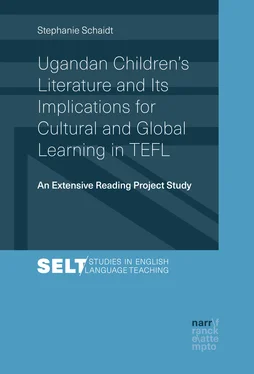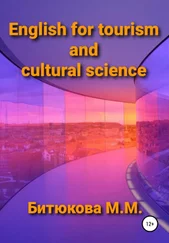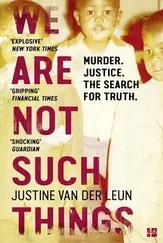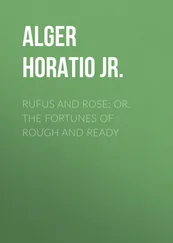There are folktales with human characters, with animal characters and monsters (e.g. ogre stories)1 in Uganda. Furthermore, there exist etiological (also explanatory or pourquoi tales ) and trickster tales. Etiological tales are stories which try to explain “the origin of cultural traits and natural features” (Nandwa & Bukenya, 1983, pp. 77–78). They do this often in a humorous manner, not focusing on scientific facts. How Goats Lost Their Beautiful Tails (Rwakasisi, 2004), for example, purports to explain why goats in comparisons to sheep no longer have long tails. According to Rwakasisi’s story, the goats owe the loss of their beautiful tails to their naivety and trust in the sheep that were jealous of them and, therefore, betrayed them. Trickster tales feature a protagonist who is usually both cunning and foolish: They “have one central character, usually a wise trickster in animal shape. The trickster is both a creator and a clown. Sometimes he can create good things for his people, and at other times he makes incredible mischief” (Bosma, 1992, p. 10). A Testing of Strength (Bukenya, 1990), a short Ugandan drama for children based on a folktale, may be referred to as a trickster tale; it focuses on Hare, the most important trickster figure in Ugandan literature. As small as he is, he beats the big and strong elephant and hippopotamus with his wit. Characters such as Hare make folktales highly relevant for children. In terms of bodily strength children are usually the weak members of society who cannot cope with adults and thus they are often suppressed by them. Folktales, however, present a reversed world. They are
an expression of the belief that the poor and the low human beings in the society can rise to high positions while the rich and those in power […] can fall and be destroyed. The stories also indicate that wisdom will always outshine bodily strength and brute force. The brain is stronger than bodily size by far. (Bukenya et al., 1995, p. 87)
Oral folktales from East Africa have a specific structure (Bukenya et al., 1995). This structure is frequently also transplanted onto the written English text. At the beginning of many folktales a problem or conflict is presented which has to be solved. In the process of solving the initial problem, other problems often come up for which solutions also have to be found. Hence, a folktale can be described as a “movement from conflict to resolution, a movement from a state of problems to a state in which problems are resolved” (ibid., pp. 65–66). Moreover, in many folktales conflicts revolve around actions which follow each other in pairs for example obedience/disobedience, reward/punishment and good/evil. The characters also often appear in pairs and are contrasted to each other such as the senior/junior wife, good girl/disobedient girl, grandmother/granddaughter, adult/child, young girl/ogre. Good behaviour is rewarded whereas bad behaviour is punished (ibid.). The folktale The Adventurous Sisters (Okurut, 1999) makes use of such a structure. There are two sisters in the story. Whereas Nyabucureera is good and humble, Nyabwangu is “loudmouthed and badly behaved” (ibid., p. 1). On their journey to the other side of the mountain, Nyabucureera shows great readiness to help whomever they meet on the way but Nyabwangu insults the creatures instead. On their way back home, when they meet the same creatures again, Nyabucureera is punished by them for her bad behaviour. This teaches her a lesson and she returns home a different person.
Many Ugandan writers make use of different oral techniques in their folktales. They integrate, for example, chants and songs in the written texts. Those chants and songs involve the children who read the story in the narration process. They may shout or sing them out aloud and so become an active part of the story. In some of the folktales, the chants/songs appear in a language different from English. In The Baby in the Forest , for example, the baby/monster repeatedly asks: “ Kusa ompekire ibaaki? (Why can’t you grind the millet with me on your back?)” (Barungi, 2009, p. 13). Other characteristic features of oral tales in Uganda are opening and closing formulae which involve the listeners. As Kizza (2010, p. 100) explains
a Muganda2 storyteller invites the audience to join in the storytelling with these words: olwatuuka ngambalabira. This is an invitation that catches the attention, because literally translated it is ‘once upon a time I saw.’ After uttering what is clearly an incomplete statement, the storyteller stops. If the audience wants to know what the storyteller saw, they must acknowledge that they are paying attention and ready to hear and participate in the storytelling by replying: nobulabibwo (with your very own eyes). Then the storyteller can start narrating.
Most of the translated folktales, which were written down for children, however, start and close with similar phrases as their Western counterparts such as “A long time ago” (Okurut, 1999, p. 1) and “they lived happily for many years” (Ranzo, 2013, p. 24).
Ugandan folktales often talk about the past. They are frequently set in ancient times, before there was any technology and when the traditional value system was stronger. Therefore, some stories are criticised for propagating obsolete values such as unquestioned obedience to elders or gender stereotypes. Various Ugandan scholars (Kiyimba, 2005; Mushengyezi, 2013) condemn the portrayal of women in some Ugandan folktales:
Many of the stories I collected (the ‘Njabala’ tale is a good example) depict women characters negatively. In other stories girls are presented as objects of male voyeurism, their only value being to be married off in exchange for cows and goats. The Nshemere story from Ankole narrated to me by Siriva Tinkamanyire depicts a village beauty who is all too grateful to give herself away to a man she barely knows. (Mushengyezi, 2013, p. xx)
Also certain recently published tales for children include gender stereotypes. In The Jewels of Amuria (Ranzo, 2013), for example, the daughters, who are described as “fully-grown and ripe for marriage” (ibid., p. 4), are the objects of men’s desires. Their suitors perform different tasks and pay high dowries in order to get their hand in marriage. The girls’ perspectives are not described in the story. At the end of the folktale the chief hands the youngest daughter over to the herdsmen with the words “Aliyah is all yours” (ibid., p. 22). In folktales of this kind, girls are not presented as individuals in their own right. Beauty plays a very important role in their lives; it determines their future. As children they have to listen to their father and brothers and when they are married they have to obey their husbands.
Not all folktales and their adaptations for children are, however, gender imbalanced. Many tales also portray strong female characters that beat men with their wisdom and wit. Moreover, some writers transfer the folktale to modern times and talk about issues only young people of today can relate to. In The Baby in the Forest (Barungi, 2009), for example, references to Bill Gates and computers are made. The Ugandan writer and children’s literature critic Aaron Mushengyezi, pleads for a stronger acknowledgement of contemporary versions of folktales in an interview:3
[t]raditional stories are constantly retold. Over time they acquire new motives and new structures. So, for example, in the traditional story you may have Hare going to visit his friend, Hyena, but in the modern version he may go on a BodaBoda 4 or he may call Hyena on a mobile phone. There are those modern motives which are constantly fused into the traditional stories. And I think we should recognise those as adaptations of the traditional folktale, and they are legitimate in their own right. They are not the authentic traditional story but they are variations of it and they can stand on their own.
Читать дальше












